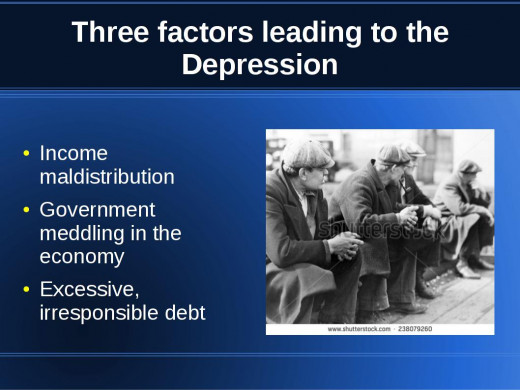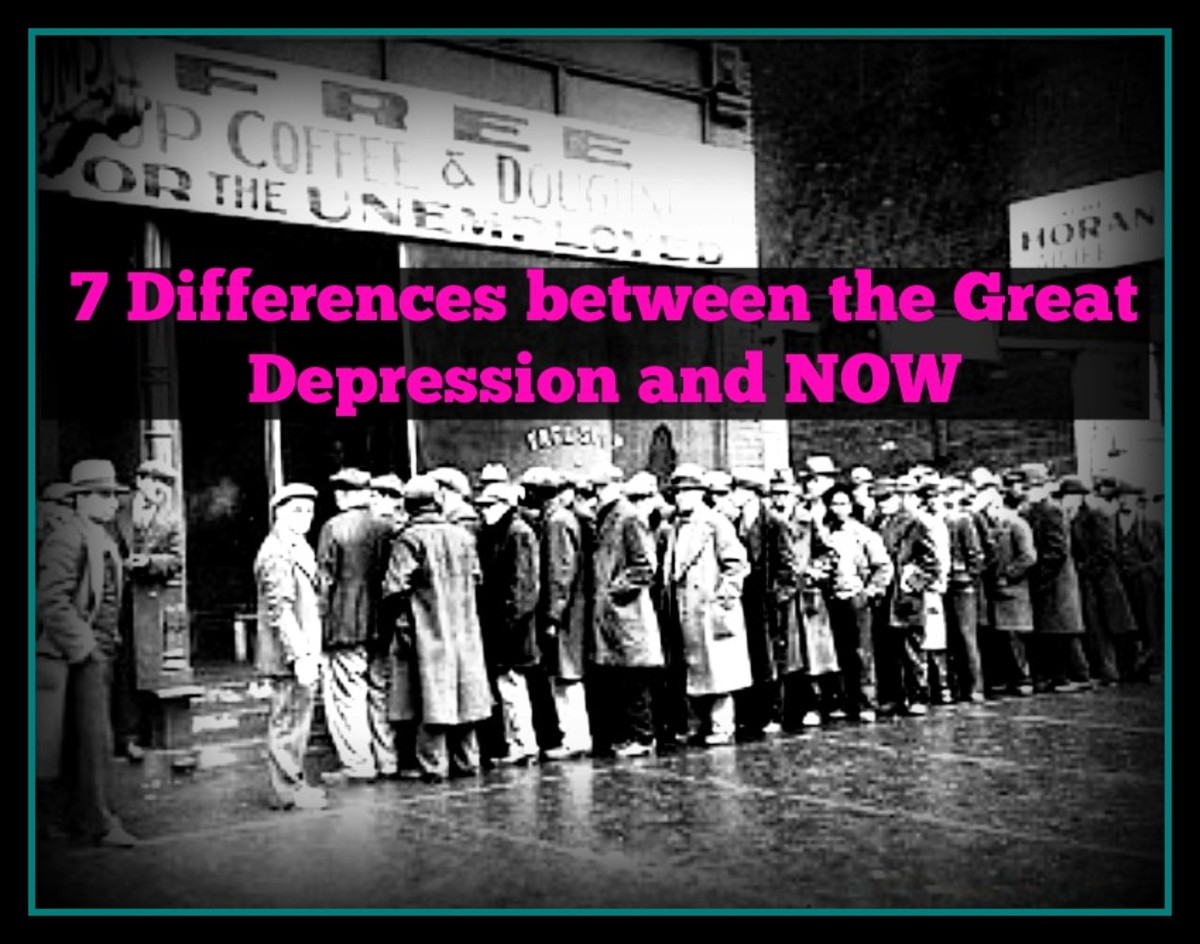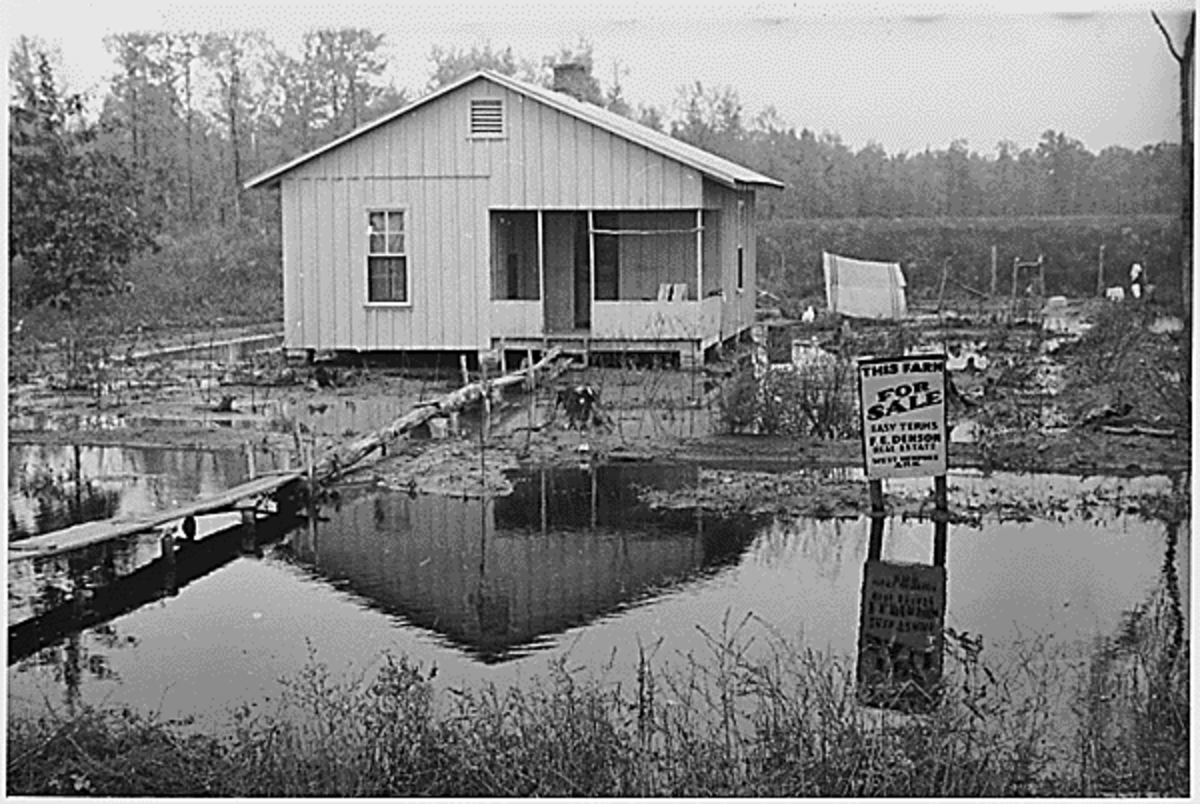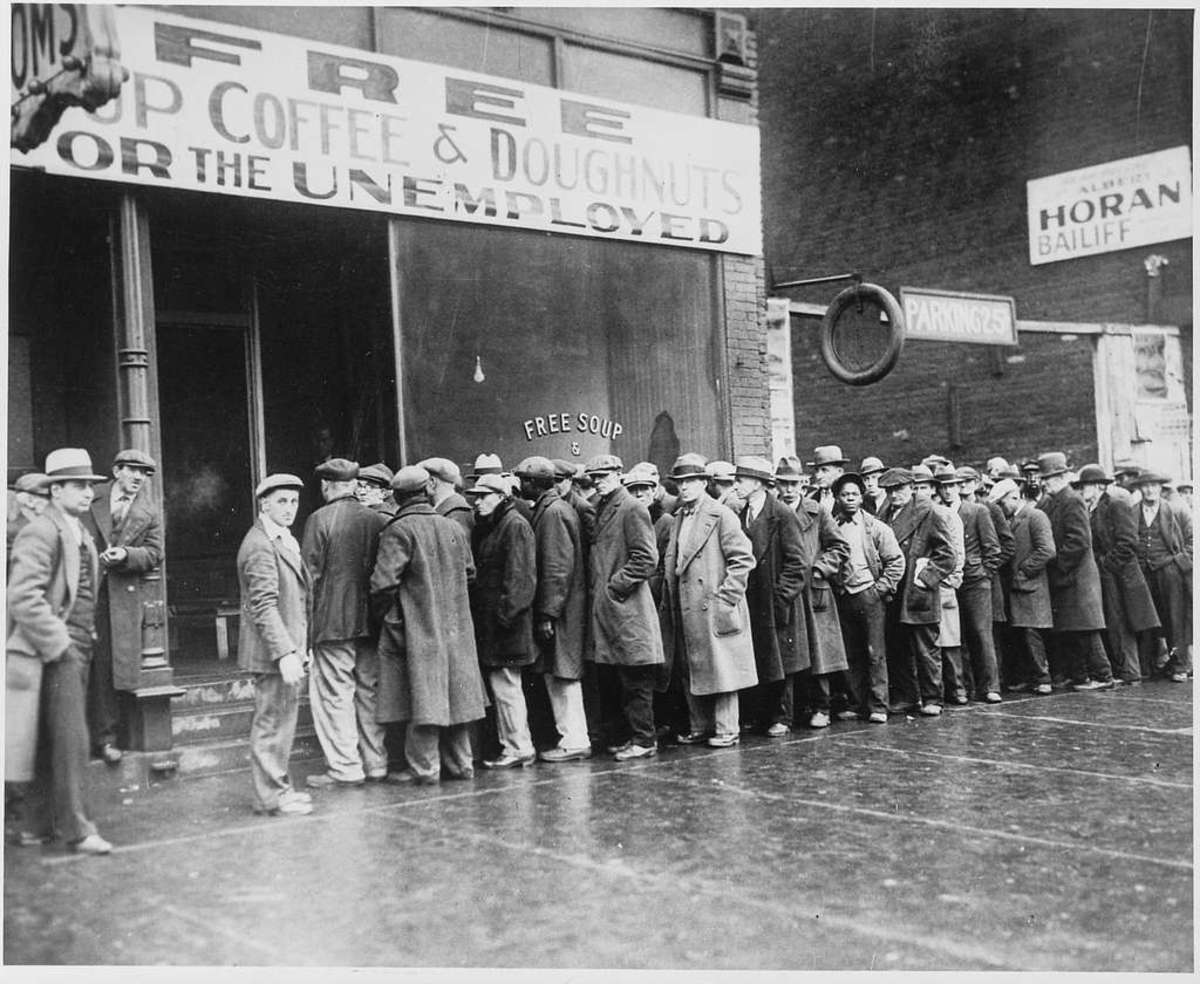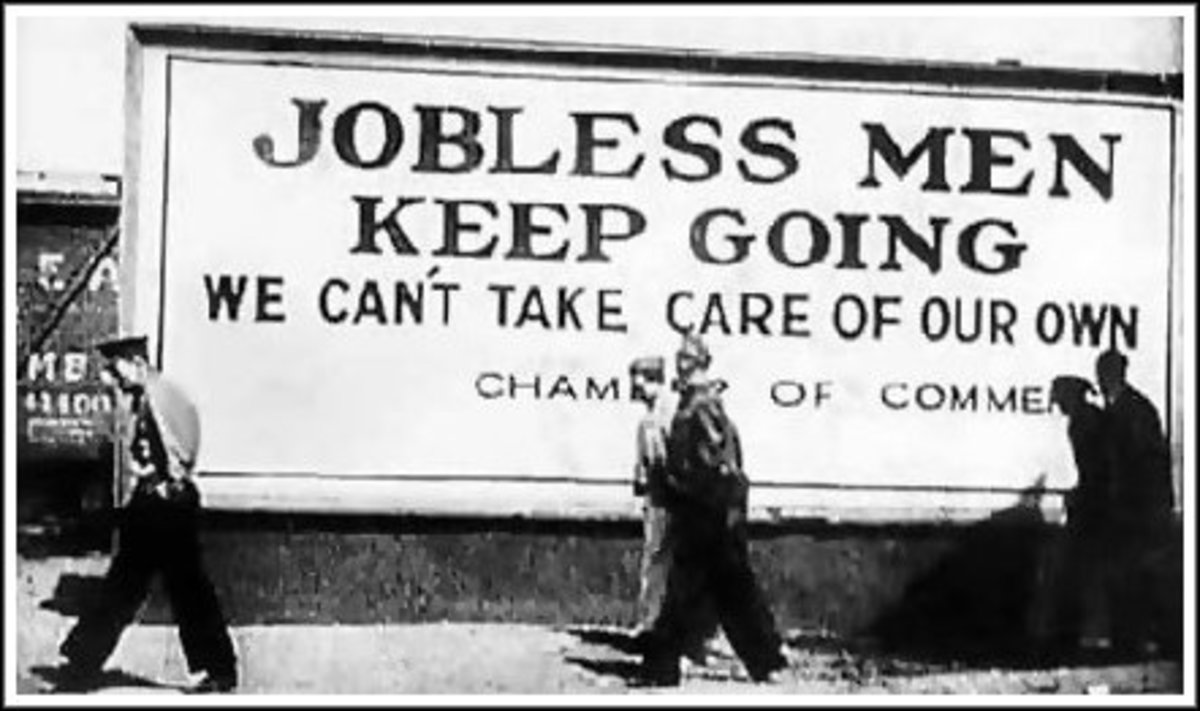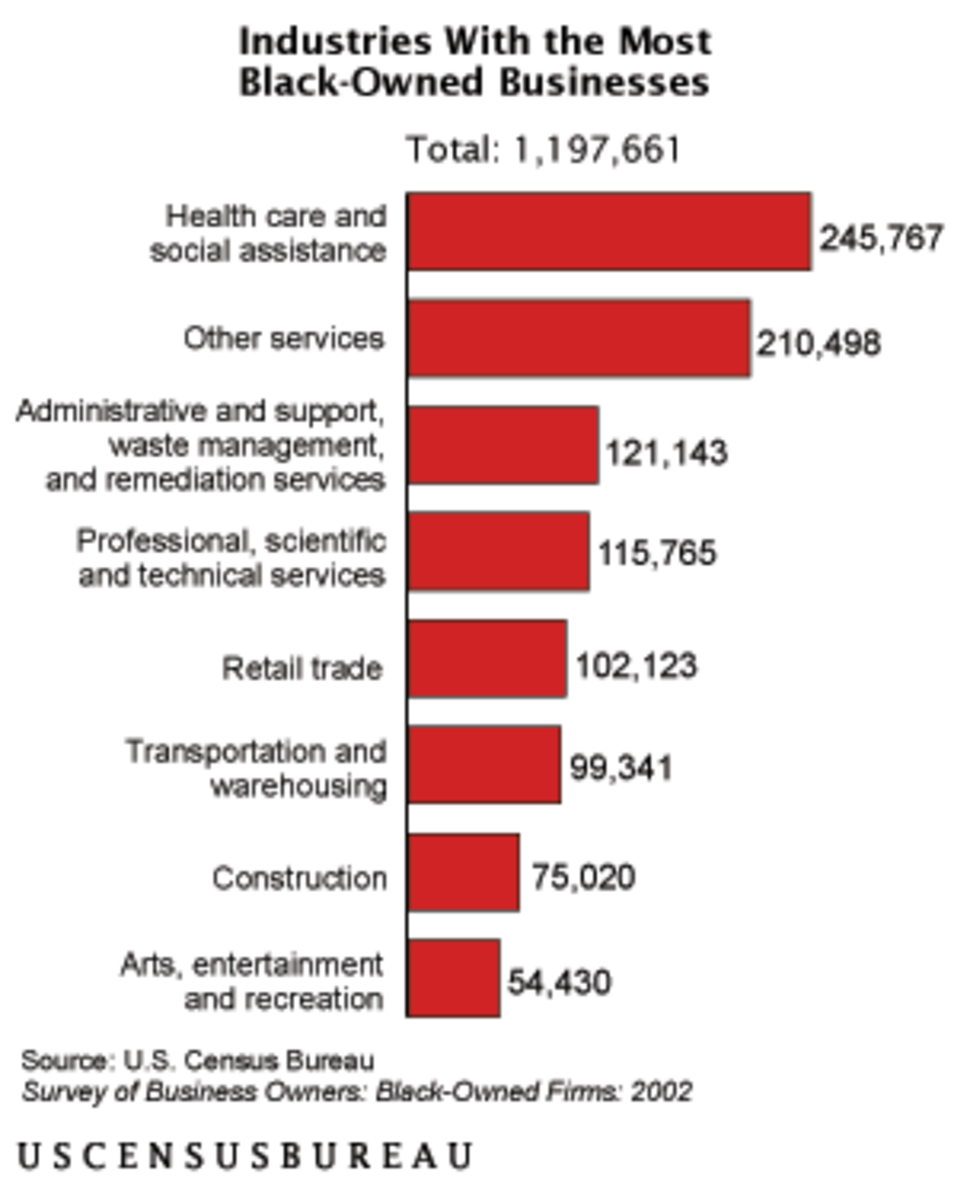What Caused the Great Depression?
Introduction
Historians and pundits have debated the cause of the Great Depression for decades. No clear consensus has emerged as to how it came about. This is crucial, because unless we understand how it happened once, we have no realistic hope of assuring that it will not happen again. There are many theories. In this article I will give an overview of theories that have been proposed.
Various theories
Because there are so many theories, I need to come up with a classification system. Any such system much implicitly make judgments about theories in order to assign each to a category. Even the devising of categories implies value judgments about what features are important.
First, I will dispense with the theories I find too vague to be useful. One theory is the Law of Compensation, which I would describe as an impressionistic form the business cycle theory. This theory is that after good times have prevailed for a while, bad times must ensue to preserve a kind of cosmic balance. A slightly more thoughtful variant is the chastisement theory, proposed by President Hoover’s Treasury secretary, Andrew Mellon. He maintained that capitalism had become corrupt, that this corruption led to the bad times, and that the Great Depression was necessary to “purge the rottenness out of the system.”
There are many theories that point out proximate causes, without probing more deeply for the root causes lying behind them. First is the monetarist theory, favored by Milton Friedman and many others: that the Depression occurred because the banks failed and so the money supply dried up. Well and good, but why did the banks fail? Second, the demand-side theory, that the Depression was caused by a decline in spending. Others attribute the Depression to a maldistribution of income which made goods unaffordable despite ample supply, to the rise of corporations or to the rise of consumer culture. Joseph Schumpeter maintains that the Depression resulted from a perfect storm of economic cycles all reaching their low simultaneously by chance.
A number of theories assert that the Depression began in Europe, triggered by government policies, then spread to America. Many blame the Versailles Treaty for starting the Depression in Europe, which then spread to America. They find support in the writings of John Maynard Keynes, who harshly criticized the treaty. Others blame the American government's policy of high import tariffs, most notably the infamous Smoot-Hawley tariff bill, blamed by supply-siders for driving Europe into depression, which in turn killed demand for American exports. Others blame the winding down of loans to Europe under the Dawes Plan for removing a prop from under the European economy.
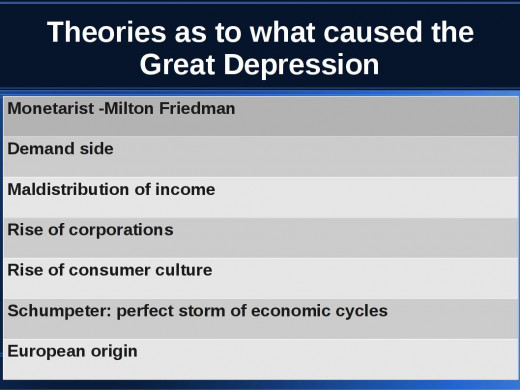
McElvane's Theory
In his book The Great Depression, Robert S. McElvaine gives many details about circumstances lying behind all these proximate causes. He points out that income maldistribution and overproduction began in the 1920s in the farm sector, which employed one quarter of all Americans. The farm depression was attributable to a combination of farm price controls imposed by then Agriculture secretary Herbert Hoover and excessive production encouraged by the government to support the war effort in the previous decade. Farmers that had once been independent were forced deep into debt, and then lost their farms when the banks crashed.

Another important factor is the rise of consumerism and the practice of buying luxury goods on credit. This delayed the effects of income maldistribution, by making it possible to consume produced goods without money, at the expense of ballooning debt. Parallel to this, there were speculative bubbles in both real estate and the stock market, both highly leveraged by debt. All this debt made credit tight, and less available for capital investments.
Finally, the weak economy in Europe reduced demand for American exports. The Dawes Plan loans had propped up Europe’s economy, at the expense of tying up more capital in foreign loans. As this petered out, new tariffs made it harder for Europe to sell goods to Americans.
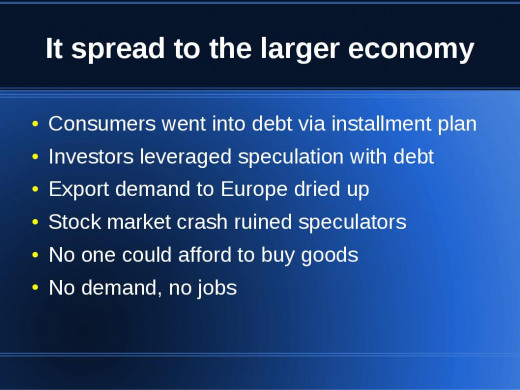
Three threads of causation
McElvane maintains that all of these factors piled on to accomplish two things: to disguise the severity of economic problems during the 1920s - creating an illusion of sustainable prosperity - and to bring about the Great Depression when the speculative bubbles burst and the debt could no longer be maintained. I see three common threads here: income maldistribution, ill-considered government policies and morbidly excessive debt. The prosperity of the 1920s was partly real: production and consumption both soared, and business became far more efficient. However, it was also partly illusion: out of control debt disguised a multitude of problems, including the problem the debt itself posed. The entire country was living on borrowed money and borrowed time. Inevitably, reality foreclosed on the overheated economy and the Depression was on.
